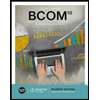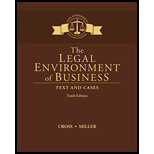
Case summary:The person J and the person LF owned the H club. The person LF opened several clubs, enterprises, and published a magazine under the trademark H and LF. When the person J opened his own store under the name H, he paid the license fee to the person LF for using its trademarked name. But later on, he stopped paying fees. The company LFP, owned by the person LF, filed a case against the person J for infringement of trademark H. The court passed an injunction order against the person J preventing the person J from using the H trademark. The person J opened a new retail store named FS gifts. The person LF sued the person J for violating the injunction order passed by the court.
To Find:The result of the case if the person J had used the marks on an entirely different line of goods.
Want to see the full answer?
Check out a sample textbook solution
Chapter 8 Solutions
The Legal Environment of Business: Text and Cases (MindTap Course List)
- The police weren't there during the shooting. The pastor was killed. Later, a man was killed in his bathroom with a baby crying. How does this relate to search and seizure, probable cause, and admissible?arrow_forward(1) Strict Liability: Was the McDonald's coffee case an appropriate one for strict liability, based either on an unreasonably dangerous product or inadequate warnings? Look over the requirements for strict liability, and apply the facts as known about this case to the requirements for strict liability in these circumstances.arrow_forwardIn 1992, Donna Smith telephoned Clark, the man- ager of Penbridge Farms, in response to an adver- tisement Clark had placed in the July issue of the Emu Finder about the availability for sale of proven breeder pairs. Clark told Smith that he had a breeder pair available. Clark sold the pair to Smith for $16,500. Some months later, after Smith had had a chance to inspect the pair, she discovered that Clark had sold her two males. Smith immediately notified Clark and revoked her acceptance of the animals. Clark said the revocation was too late. Was it?arrow_forward
- 1.What issue(s) must the court decide in this case? In 1996 Diane worked in the Edmond, Oklahoma Post Office and witnessed the murder of several of herco-workers. She was diagnosed by her doctor with post-traumatic stress disorder and subsequently lefther job at the Post Office because working there aggravated her symptoms. In March 2009, whileworking as a service coordinator at Avaya Communications, Diane became aware of an altercationbetween two employees where one of the individuals, by the name of Lunsford, had previouslythreatened to “go postal.” Lunsford was suspended from his job. Upon hearing of his return to work,Diane became physically ill and left work. Her current doctors confirmed that she suffered from posttraumatic stress disorder and was unable to work in an environment that she perceived to be unsafe.She eventually was placed on short-term disability leave. After being on short-term disability for twomonths, Diane requested that her employer either 1) relocate…arrow_forwardIdentify 5 different acts that take place in The Firm (book or film) that are both torts and crimes. Fully explain the tort and crime (including the elements of each) and apply it to the act in the film by way of explanation. In addition, explain how the wrongdoers were brought to justice at the end of the film.arrow_forwardAssume that adulterating Magentum is a strict liability crime and a tort. Which of the following will most likely occur? The government will bring charges against the businesses for the strict liability crime and individuals injured by drinking the adulterated Magentum will bring tort suits. The government will file assault and battery charges against the businesses. The government will bring criminal assault charges against the businesses, push for punitive damages, and sue the business owners for torts. Individuals will press charges against the businesses for attempted manslaughter.arrow_forward
- X bought a skin whitening product she saw on tv because it was claimed to be "the best in the market today." The product did not actually deliver the result expected by X. There is vitiation of consent due to fraud.arrow_forwardAnswer the following 1. What are the issues mentioned in the case?2. If you are Betty, how would you have responded to the complaint of Neal Coleman about Lynecia?3. Are Lynecia’s actions and treatment toward betty considered insubordination? List all the reasonsthat might fall under insubordination.arrow_forwardPlease do not give solution in image formate thanku. Catherine Creteau and her husband contracted with a travel agency, Liberty Travel, to arrange a trip to Jamaica.While staying in Jamaica in accommodations arranged by Liberty Travel, they were robbed at gunpoint. The Creteaus alleged that Liberty Travel either knew of safety issues with the accommodations or such information was available to Liberty Travel. What duty did the Creteaus allege their agent had breached?arrow_forward
- The general rule is that there is no duty to rescue another, absent a special relationship. Was the Court correct to impose a duty on the psychologist to a third party? What are the implications for a society where legal duties to rescue are enforced? What are your refined ideas about the relationship of law and ethical behavior?arrow_forward2) Punitive Damages: Regardless of whether you feel the case was an appropriate one for strict liability, was the McDonald's coffee case an appropriate case for the award of punitive damages? Look over the requirements for punitive damages and assess whether the jury award was appropriate in this case. Why or why not?arrow_forwardFAMILY OF KUGA VICTIM TO BRING CLASS-ACTION LAWSUIT AGAINST FORDThe family of Reshall Jimmy, who died when his Ford Kuga burst into flames, will be pursuinga class-action lawsuit against the vehicle manufacturer. The family’s lawyer, Rod Montano,announced the expected lawsuit during a briefing at the National Press Club on Tuesday(January 17, 2017). Ford announced on Monday that it was recalling the vehicles. In December2015, the automaker released a statement after several Kuga’s caught fire. It notified ownersthat it was investigating reports of engine fires in that model and asked them to take theirvehicle to their dealer for a maintenance check.Still no closureFord has come up with excuses to protect their brand instead of giving the family closure, saysa relative of Reshall Jimmy, who died when his Ford Kuga caught fire in December 2015.Rushall's brother, Kaveen Jimmy said on Monday following Ford’s press briefing in Pretoria:“They have not been doing the right thing… all of the…arrow_forward
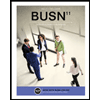 BUSN 11 Introduction to Business Student EditionBusinessISBN:9781337407137Author:KellyPublisher:Cengage Learning
BUSN 11 Introduction to Business Student EditionBusinessISBN:9781337407137Author:KellyPublisher:Cengage Learning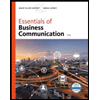 Essentials of Business Communication (MindTap Cou...BusinessISBN:9781337386494Author:Mary Ellen Guffey, Dana LoewyPublisher:Cengage Learning
Essentials of Business Communication (MindTap Cou...BusinessISBN:9781337386494Author:Mary Ellen Guffey, Dana LoewyPublisher:Cengage Learning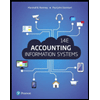 Accounting Information Systems (14th Edition)BusinessISBN:9780134474021Author:Marshall B. Romney, Paul J. SteinbartPublisher:PEARSON
Accounting Information Systems (14th Edition)BusinessISBN:9780134474021Author:Marshall B. Romney, Paul J. SteinbartPublisher:PEARSON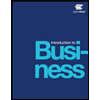
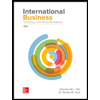 International Business: Competing in the Global M...BusinessISBN:9781259929441Author:Charles W. L. Hill Dr, G. Tomas M. HultPublisher:McGraw-Hill Education
International Business: Competing in the Global M...BusinessISBN:9781259929441Author:Charles W. L. Hill Dr, G. Tomas M. HultPublisher:McGraw-Hill Education